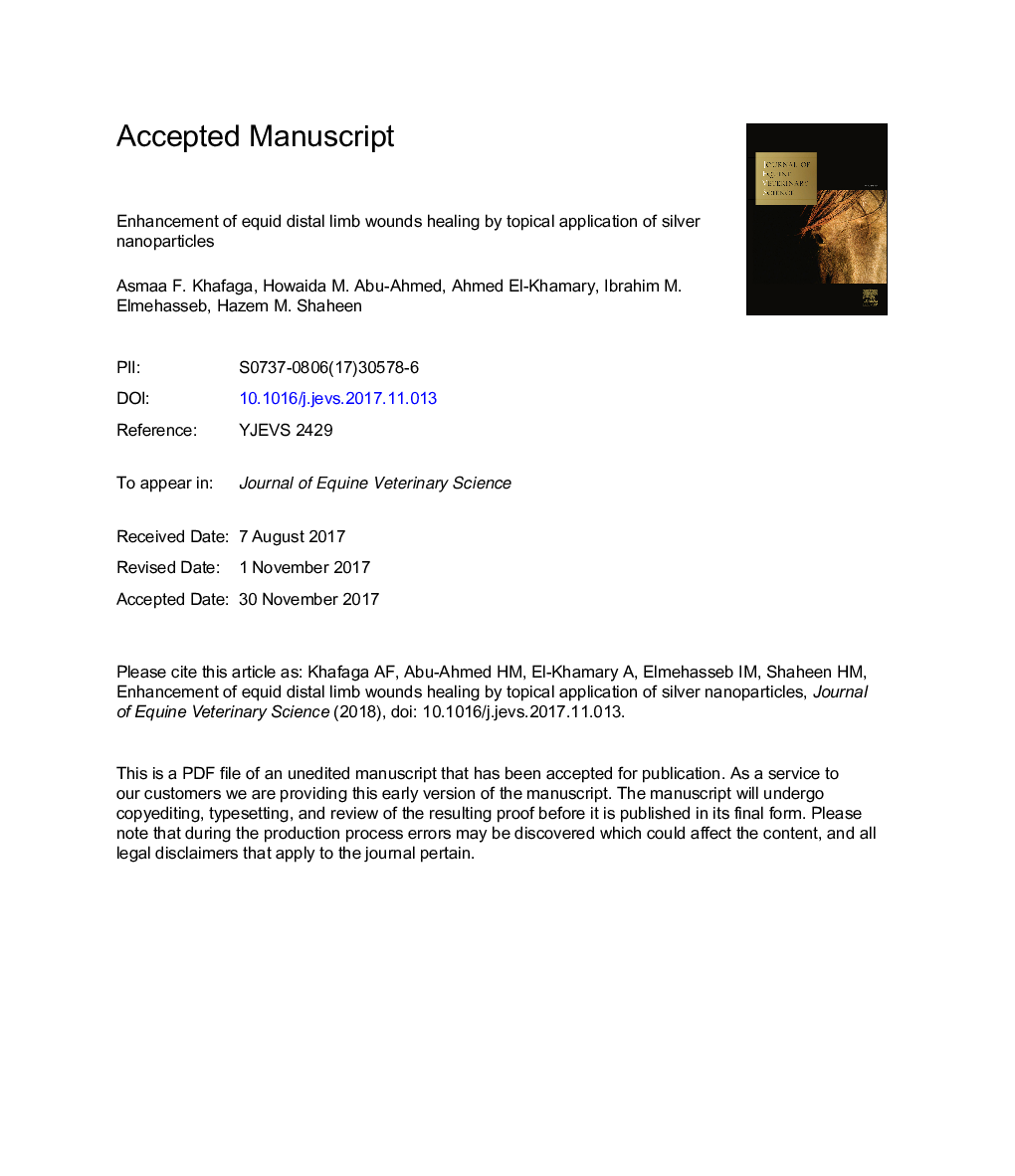| Article ID | Journal | Published Year | Pages | File Type |
|---|---|---|---|---|
| 8483263 | Journal of Equine Veterinary Science | 2018 | 42 Pages |
Abstract
Healing of equine distal limb wound represents a challenging problem and occupies a vital place in everyday pathology. Silver nanoparticles (AgNPs) are attractive materials for many researchers because of their anti-inflammatory, antibacterial, and wound-healing properties; as such, this study was performed to investigate the healing efficacy of AgNPs on second-intention wound healing in five clinically healthy donkeys as compared with silver sulfadiazine. Wound healing was evaluated clinically (healing rate [%], healing time [days], epithelialization rate [%]), whereas the antimicrobial effect of AgNPs was evaluated by comparing with amoxicillin/metronidazole mixture. In addition, angiogenesis, re-epithelialization, cellular invasion, and scar width were characterized by histopathology and the immunohistochemical localization of transforming growth factor beta 1 (TGFβ1) was assessed, along with the ultrastructure of the AgNPs-treated wounds. Accelerated wound healing, better cosmetic appearance, and efficient antimicrobial effect were achieved with AgNPs dressing. Superiority of AgNPs in wound healing was approved histopathologically by the early granulation tissue formation, higher epithelialization (%), and reduced scar width. Positive TGFβ1 immunoreactivity with macrophage, fibroblast, and endothelial localization was reported during the inflammatory and the proliferative phase; however, it has reduced during the remolding phase producing a faster scar-free wound healing. The cytocompatibility of the AgNPs with fibroblast was demonstrated by the integrity of the cellular and nuclear membrane with nonfragmented nucleoli, as detected by the ultrastructural examination. It could be concluded that AgNPs represent a step forward and a promising alternative dressing in wound healing in donkeys through its anti-inflammatory, antimicrobial, and favorable cosmetic properties, in addition to its role in regulation of TGFβ1 production.
Related Topics
Life Sciences
Agricultural and Biological Sciences
Animal Science and Zoology
Authors
Asmaa F. Khafaga, Howaida M. Abu-Ahmed, Ahmed N. El-Khamary, Ibrahim M. Elmehasseb, Hazem M. Shaheen,
